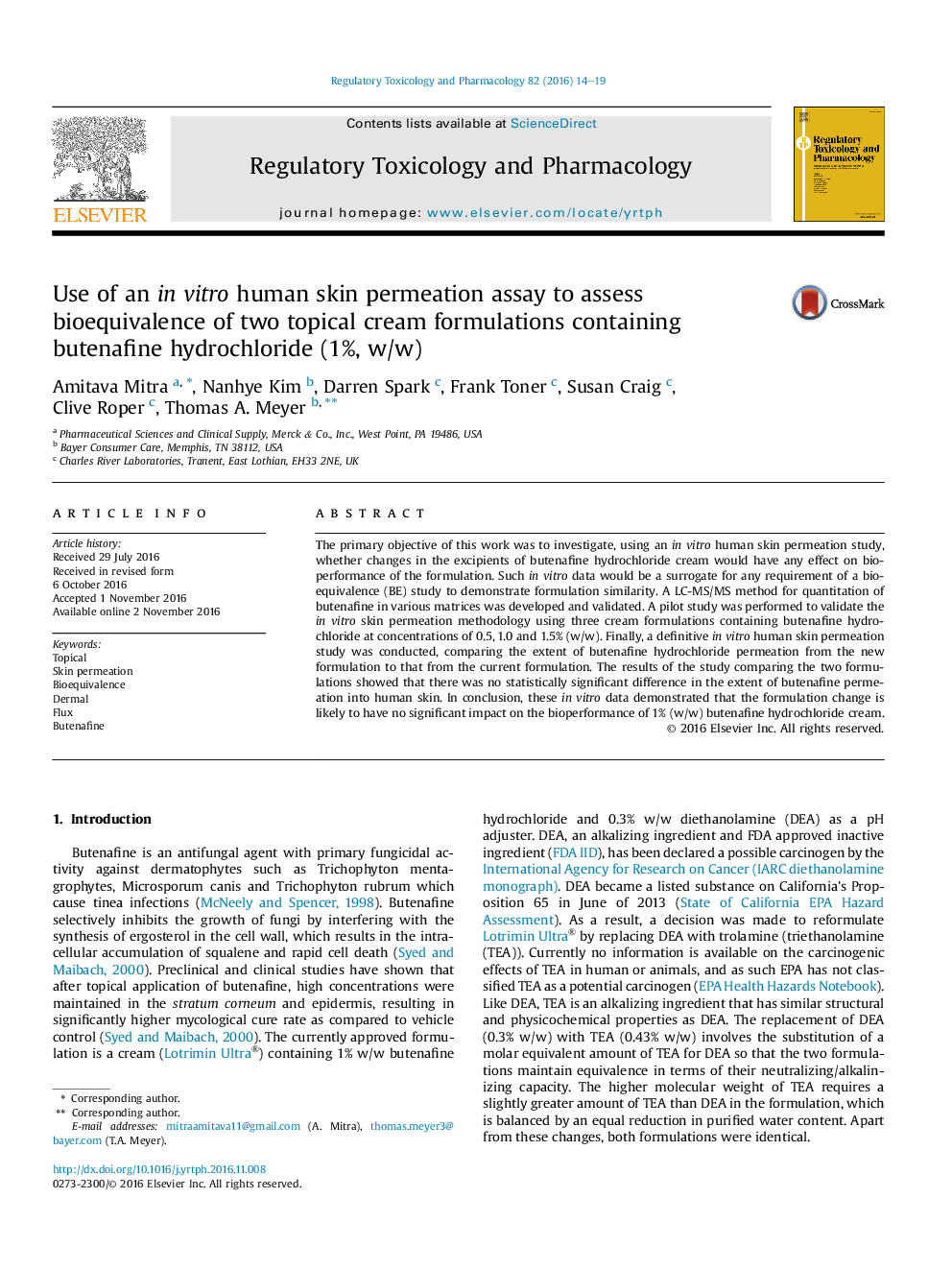| Article ID | Journal | Published Year | Pages | File Type |
|---|---|---|---|---|
| 5561298 | Regulatory Toxicology and Pharmacology | 2016 | 6 Pages |
â¢In vitro skin permeation assay conducted to compare 2 butenafine cream formulations.â¢Goal of the assay was to use it as surrogate for BE study between the formulations.â¢No statistically significant permeation difference was observed between the creams.â¢The results were accepted by USFDA and led to authorization to market the new cream.
The primary objective of this work was to investigate, using an in vitro human skin permeation study, whether changes in the excipients of butenafine hydrochloride cream would have any effect on bioperformance of the formulation. Such in vitro data would be a surrogate for any requirement of a bioequivalence (BE) study to demonstrate formulation similarity. A LC-MS/MS method for quantitation of butenafine in various matrices was developed and validated. A pilot study was performed to validate the in vitro skin permeation methodology using three cream formulations containing butenafine hydrochloride at concentrations of 0.5, 1.0 and 1.5% (w/w). Finally, a definitive in vitro human skin permeation study was conducted, comparing the extent of butenafine hydrochloride permeation from the new formulation to that from the current formulation. The results of the study comparing the two formulations showed that there was no statistically significant difference in the extent of butenafine permeation into human skin. In conclusion, these in vitro data demonstrated that the formulation change is likely to have no significant impact on the bioperformance of 1% (w/w) butenafine hydrochloride cream.
